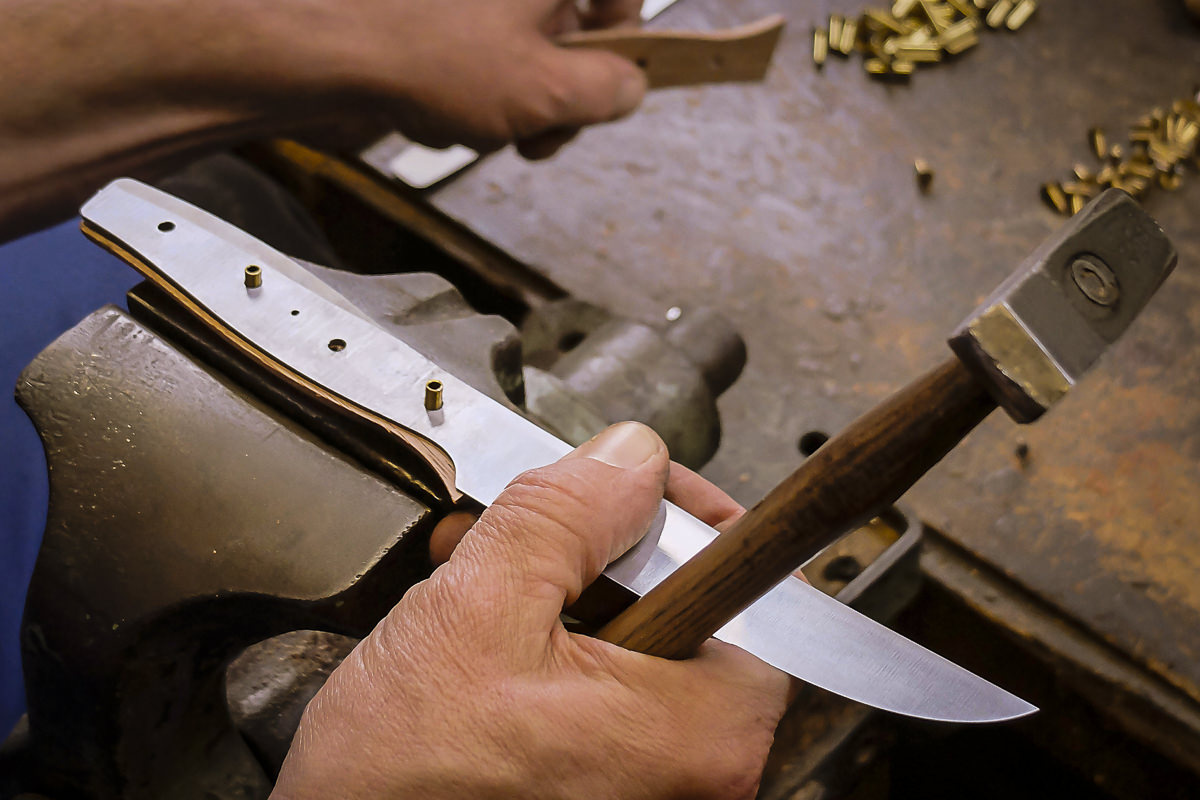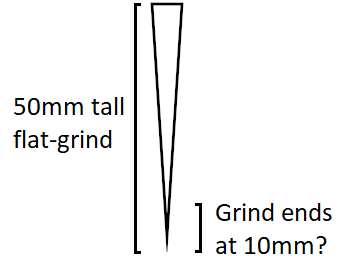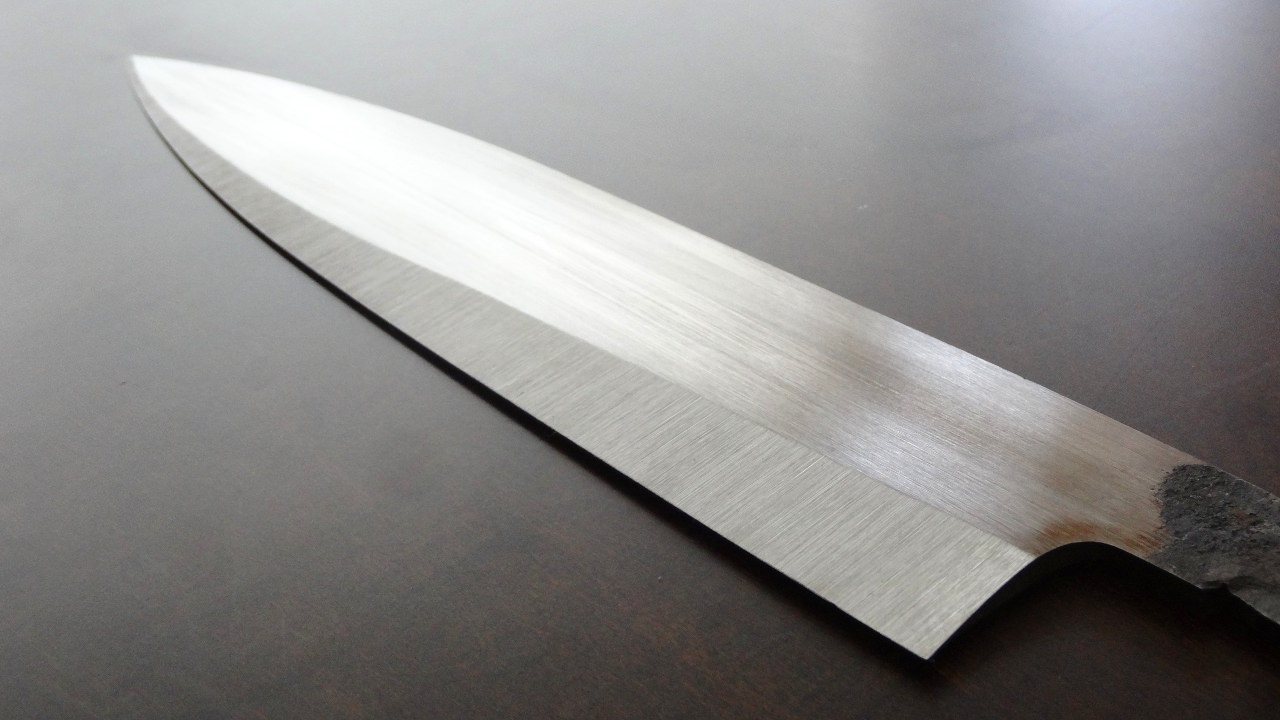Presenting the 'constant primary bevel, distal tapered' grind...
I will walk through it as seen by CAD. Note that this is completely at odds with how this blade geometry might actually be manufactured. Lets create the knife based on a chef knife/gyuto profile. The
spline below represents the cutting edge:
Chose a
primary bevel profile you would like to sweep across the cutting edge. In the previous example it was a simple triangle. The following image shows the primary bevel profile in green and the cutting edge profile in red (before we sweep the volume):
After sweeping the primary bevel profile down the cutting edge we end up with the following volume:
We can fill in the rest of the body as we see fit. This decision can include distal taper considerations. At the maximum height of the blade we draw what we want this silhouette to look like (shown in red):
Back to boat building...

... to render a volume from the distal taper profile (red, above) to the rectangular but curved primary bevel surface, we
loft from one to the other creating:
... at this point it is a weird 'blank' with a constant swept bevel and a nice distal taper. After profiling the spine:
Which isn't too bad looking! The following schematic is what the blade looks like from the right side (top left), the bottom (bottom left) and the front (top right):
To get a better sense of what is going on I have coloured the spine green, the primary bevel red and the face/hira blue. From the front:
and from the bottom:
Finally, just for fun, with tang:


































